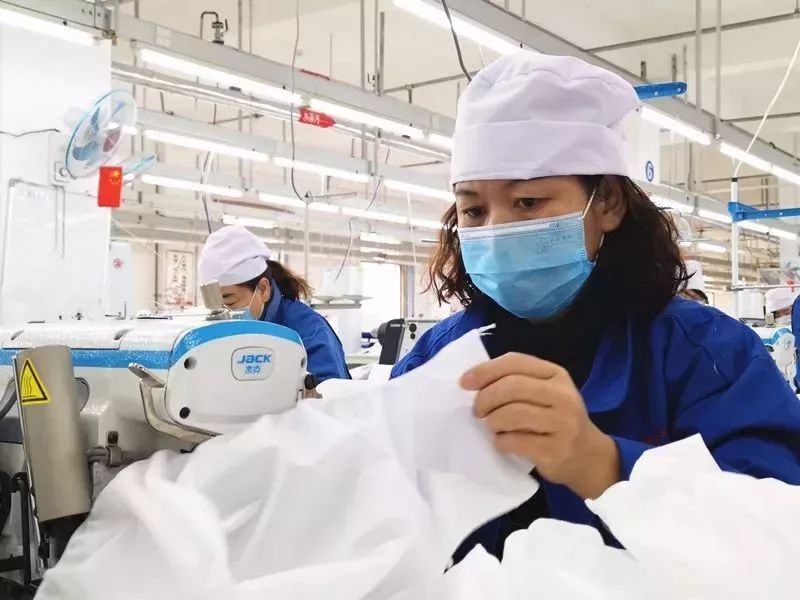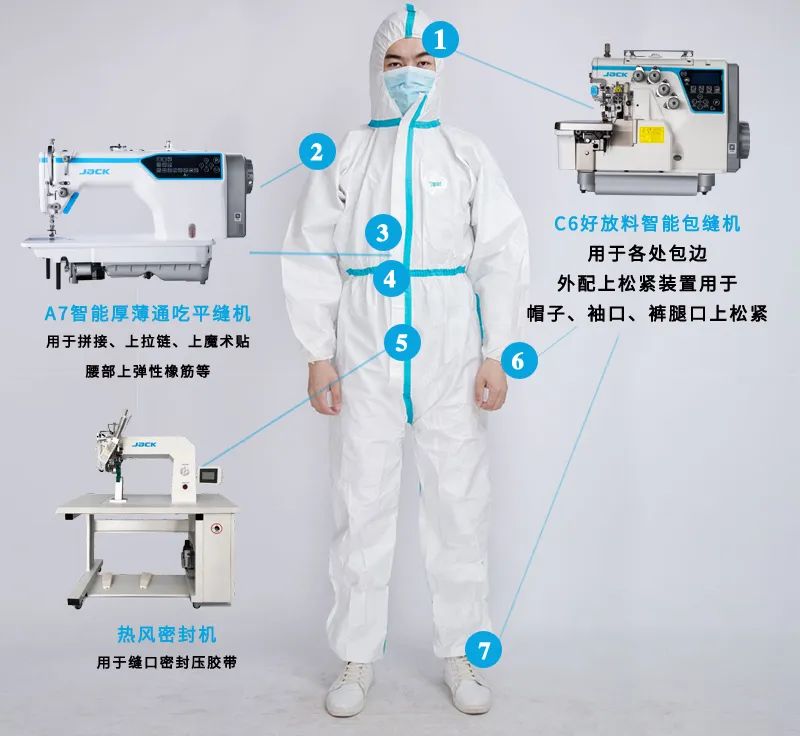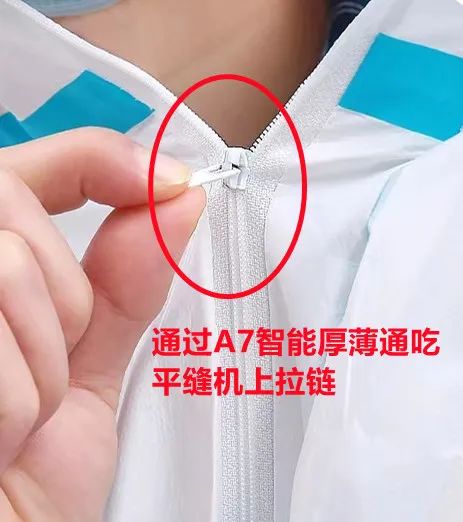Medical protective clothingWhat material is it made of and what machine is it made of?
The shortage of protective clothing has led more and more garment factories to add protective clothing production lines. Working overtime to produce protective clothing for frontline personnel in epidemic prevention and control, each piece of protective clothing reflects the company’s determination and strength to fight the epidemic and promote development.
As medical protective clothing, it not only needs to be moisture-wicking, breathable, and comfortable to wear, but also protect medical staff from infection by various pollutants such as viruses and bacteria during diagnosis and treatment. Do you know what materials it is made of? Success, can actually achieve such an effect?

It is required to achieve “three rejections and one resistance”, that is, water, blood, and alcohol rejection And anti-static medical protective clothing, which is different from ordinary woven materials, uses micro-nano level materials. This kind of composite material can be compounded by different materials, such as polyethylene/polypropylene spunbond nonwoven fabric, compounded with breathable microporous film or other nonwoven fabrics, or hydroentangled nonwoven fabric compounded with breathable microporous film, or compounded with breathable microporous film. Wood paddle composite spunlace nonwoven fabric.
Several types of medical protective clothing currently being sold and developed in the domestic market are made of non-woven materials:
◆ Polypropylene spun Bonded fabric
◆ Spunlaced fabric composed of polyester fiber and wood pulp
◆ Polypropylene spunbond-meltblown-spunbond composite nonwoven fabric, namely SMS or SMMS
p>
◆ Polymer coated fabric
◆ Polyethylene breathable film/nonwoven composite fabric

How is it made?
Common medical protective clothing usually consists of a one-piece structure consisting of a hat, a top, and trousers. There are strict standards in production, including protection (sealing), wearability, safety and hygiene. Medical protective clothing can be produced by cutting, sewing, elasticizing, and gluing strips. The machines involved are inseparable from these three types: flat seams, overlock seams, and gluing.
What designs are flat seams and overlock seams used for? Which sewing machines can produce protective clothing?
Basic sewing
Whether it is ordinary clothing production or protective clothing production, almost all sewing is inseparable from the sewing machine. Although it is a “basic worker”, its The role must not be underestimated. The tightness of the wiring and the fineness of the needle pitch are related to the final effect. It can meet the sewing, zipper, Velcro, elastic and other processes in protective clothing. Medical protective clothing usually adopts a closed fly design, that is, the inner zipper closure, the outer adhesive fly, and the zipper and Velcro through flat seams. In addition to being easier to put on and take off, this design also allows for a tighter fit
Elastic bands on cuffs, ankles, and hats

In order to make the medical protective clothing fit better, its cuffs, ankle cuffs and hood are all designed with elastic closing, which can be processed by Jack A7 intelligent thick and thin all-in-one sewing machine or C6 good The material-discharging intelligent overlock sewing machine (with an external elastic device) adopts elastic rubber band closing. Its purpose is to strengthen the tightness of protective clothing when matched with other protective equipment, and to prevent dust or liquid from entering the interior from this place. [C6 good release intelligent overlock sewing machine can be used to close sleeves, trouser legs, and hats for hemming]
Elastic bands are pressed at the waist to facilitate movement and work and provide better flexibility for wearing protective clothing. The waist is usually tightened with elastic rubber bands through a lockstitch machine to increase work efficiency and safety.
The reason why adhesive tape protective clothing can achieve such a high sealing performance is, in addition to the above designs, In addition, this most important step is inseparable. After the worker sews the protective clothing, he needs to use a glue machine to seal all the stitches and pinholes in the protective clothing to prevent dust or liquid from entering through the sewing pinholes and enhance the isolation performance and use of the protective clothing. Safety.




